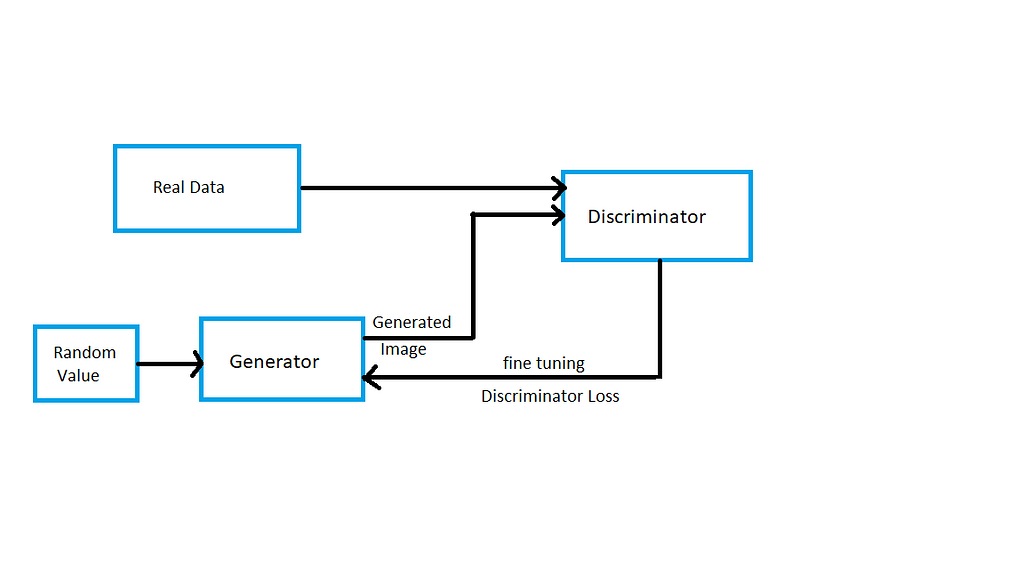
Short Introduction to Generative Adversarial Networks (GANs)
Last Updated on August 27, 2021 by Editorial Team
Author(s): Mugunthan
Machine Learning
General Adversarial Network (GAN) is a generative modeling approach using deep learning neural networks such as CNN.
There are two types of modeling techniques, i) Discriminative modeling and ii) generative modeling. Discriminative models are the typical ones that are used for classification in machine learning. They take input as features X (image, for image classification) and predict the output Y(probability of the image) for the given features. On the other hand, generative models output features X (image) given a random value.
Some of the generative models are Latent Dirichlet Allocation, or LDA, and the Gaussian Mixture Model, or GMM. Some Deep Learning generative models are Variational Autoencoders or VAE, General Adversarial Network, or GAN.

How do GAN’s work?
GAN consists of two blocks, a generator, and a discriminator. The discriminator is a trained network that will be able to differentiate between real and fake images, While the generator is not trained. Using the random value(s), the generator will generate an image which then is fed to the discriminator. Then discriminator will give how fake/real is the generated image. This helps the generator to fine-tune the subsequent image generation, finally producing indistinguishable fake images.
By its name, you can see the generator and discriminator oppose each other for the generation of the new image.
Here are Images created by a GAN created by NVIDIA

These images are faces that don’t belong to any person, but are generated by GAN !.
Hope this blog at least clarifies what GAN is?
Short Introduction to Generative Adversarial Networks (GANs) was originally published in Towards AI on Medium, where people are continuing the conversation by highlighting and responding to this story.
Published via Towards AI
Take our 90+ lesson From Beginner to Advanced LLM Developer Certification: From choosing a project to deploying a working product this is the most comprehensive and practical LLM course out there!
Towards AI has published Building LLMs for Production—our 470+ page guide to mastering LLMs with practical projects and expert insights!

Discover Your Dream AI Career at Towards AI Jobs
Towards AI has built a jobs board tailored specifically to Machine Learning and Data Science Jobs and Skills. Our software searches for live AI jobs each hour, labels and categorises them and makes them easily searchable. Explore over 40,000 live jobs today with Towards AI Jobs!
Note: Content contains the views of the contributing authors and not Towards AI.















